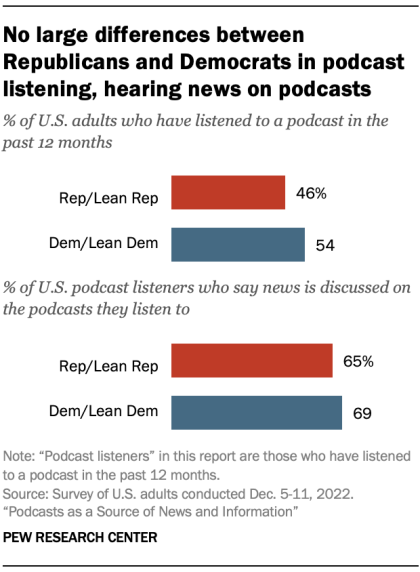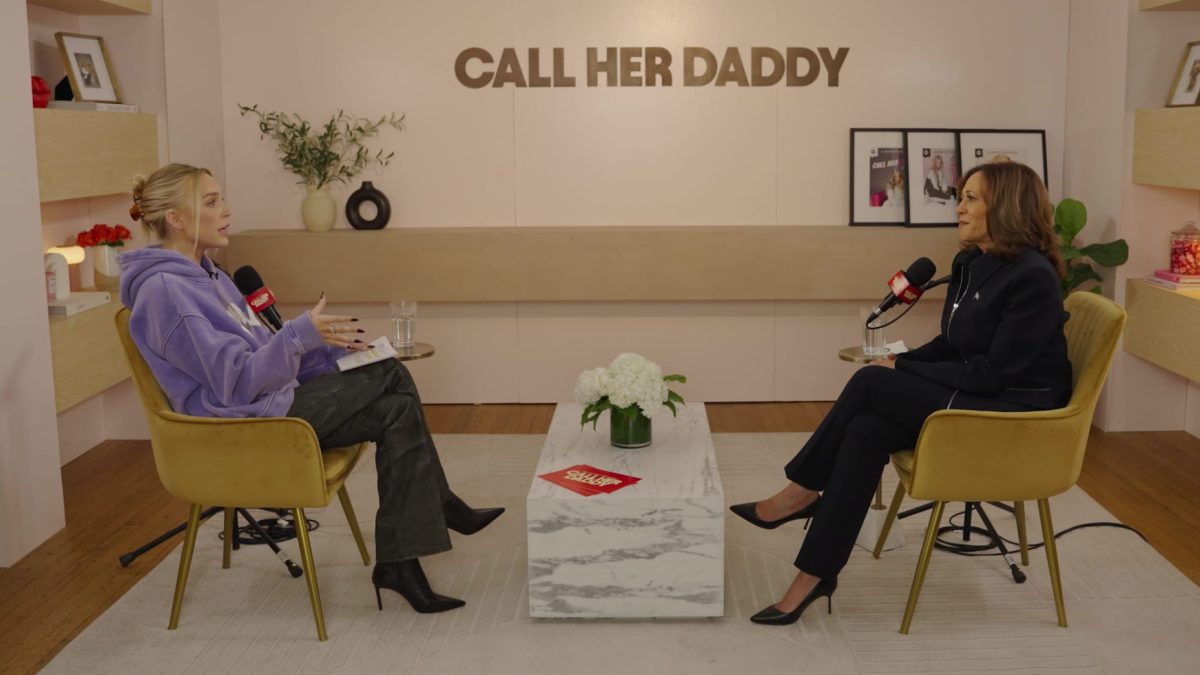On October 6th, the podcast Call Her Daddy launched an episode featuring Vice President and Presidential Candidate Kamala Harris. As the Call Her Daddy podcast features topics such as sex and relationships, the interview garnered much attention. However, keeping the rest of Harris’ media appearances in mind, the news isn’t as shocking as it seems.
According to a 2022 study done by the Pew Research Center, about a quarter of Americans get their news from podcasts, especially younger people. With just a few weeks left, presidential candidate Kamala Harris still needs to familiarize herself with voters. In fact, her biggest critiques are that she doesn’t talk about policy enough, she doesn’t do as many interviews, and that voters are still not familiar with her. This recent “media frenzy” covers all of those critiques at once, with some added benefits. Why now? Some may be asking. The timing of these interviews is just as important as the substance.

The Timing
Historically, presidential candidates have always made appearances on more casual platforms in the few weeks leading up to the election. In fact, many political observers have commonly dubbed these last minute appeals as the “October surprise” of the election cycle. However, Harris’s specific circumstances have put a spin on this. Since the Harris campaign is so young (less than three months), many critics have called the sudden surge in support a “honeymoon phase.” With so much left to say about the candidate in such little time, the Harris-Walz campaign has to ensure their October Surprise isn’t just one surprise, but many.
The Call Her Daddy Appearance
Call Her Daddy, run by comedian and writer Alex Cooper, is a weekly comedy and advice show featuring topics mostly having to do with sex and relationships. The podcast calls itself “the most listened to podcast by women” and has many celebrity interviews, and a $60 million deal with Spotify. It has an audience with a wide range, as the NPR Politics Podcast reports that 7/10 listeners are women, 9/10 are under 45, and 76% are under 35. Even the politics of the listener base aren’t as divided, with about half being Democrats, a quarter Republican, and about 20% Independent.
“[it seemed like] the goal was just to do the interview,” NPR’s Asma Khalid said about the Call Her Daddy appearance. When asked about JD Vance’s infamous “childless cat aldis” quote, Harris responded “that’s really mean.” No campaign underlines, no calls to Vance’s pattern of attack, just a simple response.
Targeted Audiences
Harris’ appearances haven’t all been hitting on the same points, as each appearance geared towards different voting groups. On her All The Smoke interview with former NBA stars Stephen Jackson and Matt Barnes (a sports and culture podcast with a greater male audience), Harris touches on race, mental health, and marijuana. On “The View” (with a base mostly made of middle aged women), she talked about her economic plans and childcare. By reaching out to these specific audiences about issues that are likely to resonate with them, Harris hopes to build familiarity and gain more votes.
Criticisms
“Kamala Harris’ Parade of (Mostly) Softball Interviews,” reads the title of an opinion article from The Daily Signal. The article isn’t alone, as Harris’ biggest critique (after not doing enough policy-based interviews) is that the interviews she does agree to don’t seem to push against her. Harris also has to walk the line between underlining policy and making herself personable, which many say she is on the wrong side of.
Conclusion
With just a few weeks away until the election, Candidate Harris is still pushing to nail down undecided voters and make herself a familiar figure with the public. The Call Her Daddy appearance is just one of many pieces of a larger picture that Harris is trying to paint before election day.





Arnav Goyal | Oct 10, 2024 at 10:26 pm
I think both candidates are trying to garner as many young voters as possible, and both campaigns are showing their methods, as I believe they are crucial to winning this election. Trump is going on Logan Paul’s podcast, JD Vance going on the Nelk Boys and now Kamala going on Call Her Daddy, it’s all a coordinated effort to get young voters in their camp. I do think Trump is at an advantage here, as he is more popular on TikTok and he’s much more known than Kamala in the long run, as she only burst onto the national spotlight in 2020.